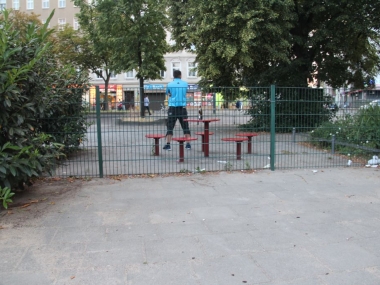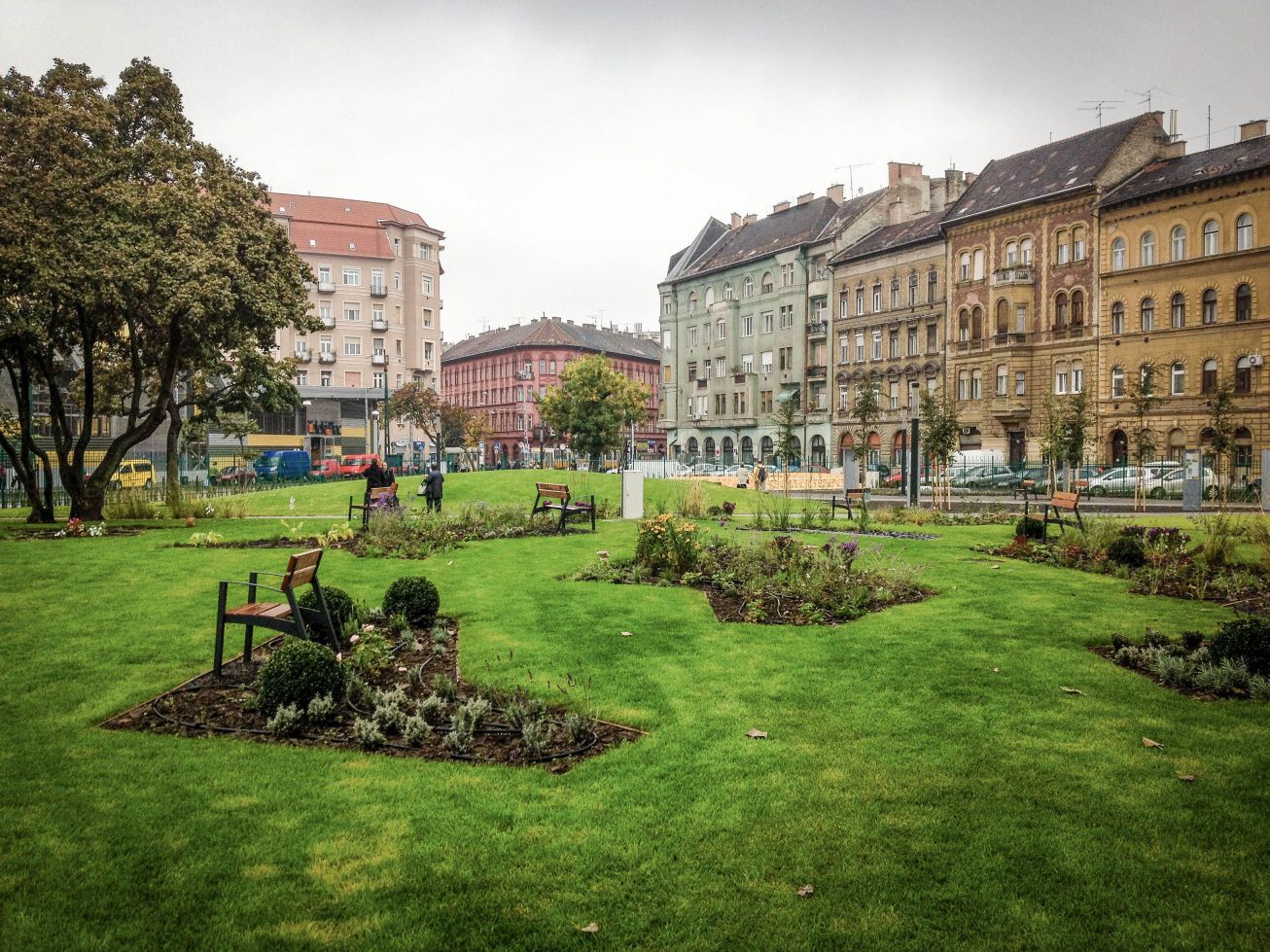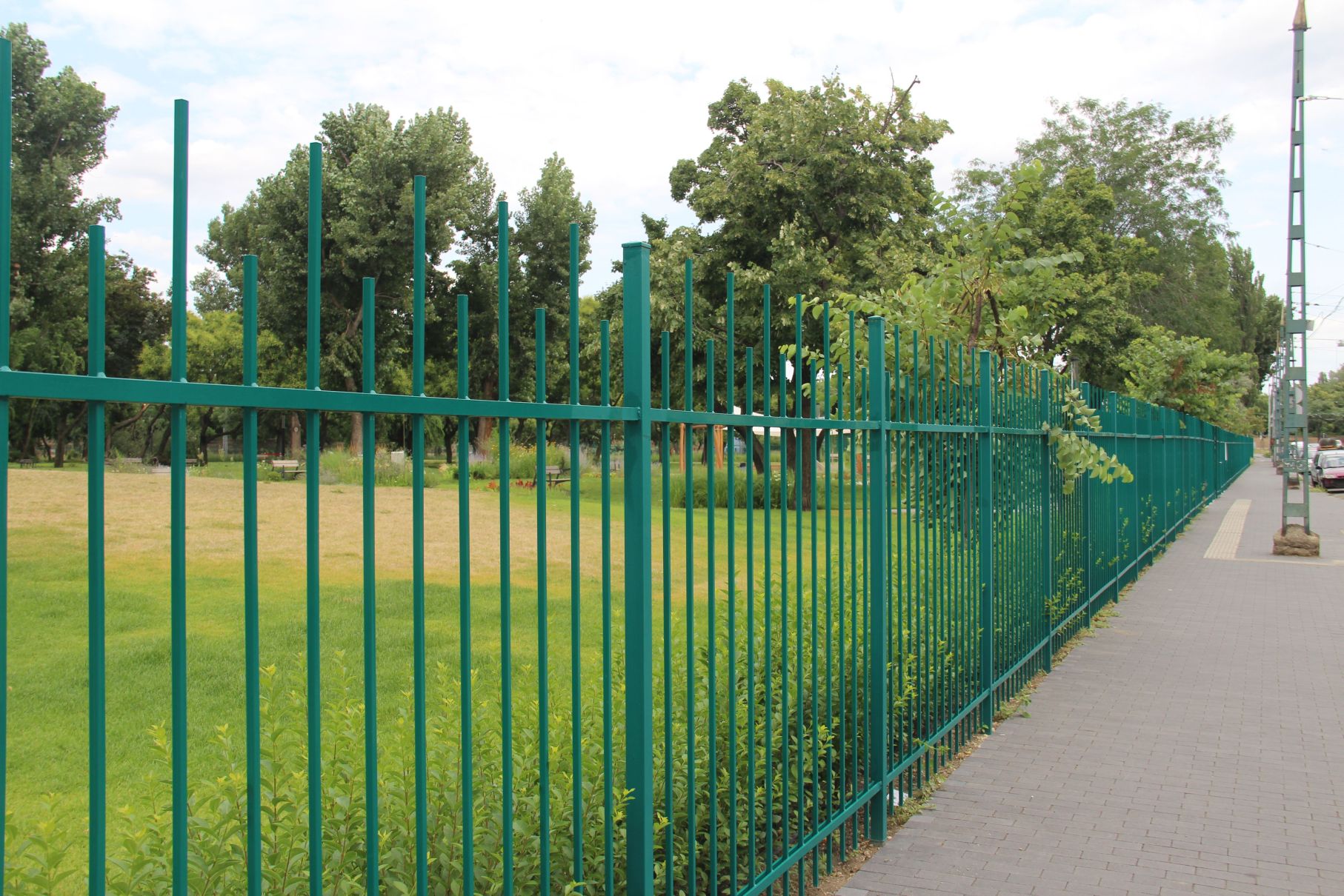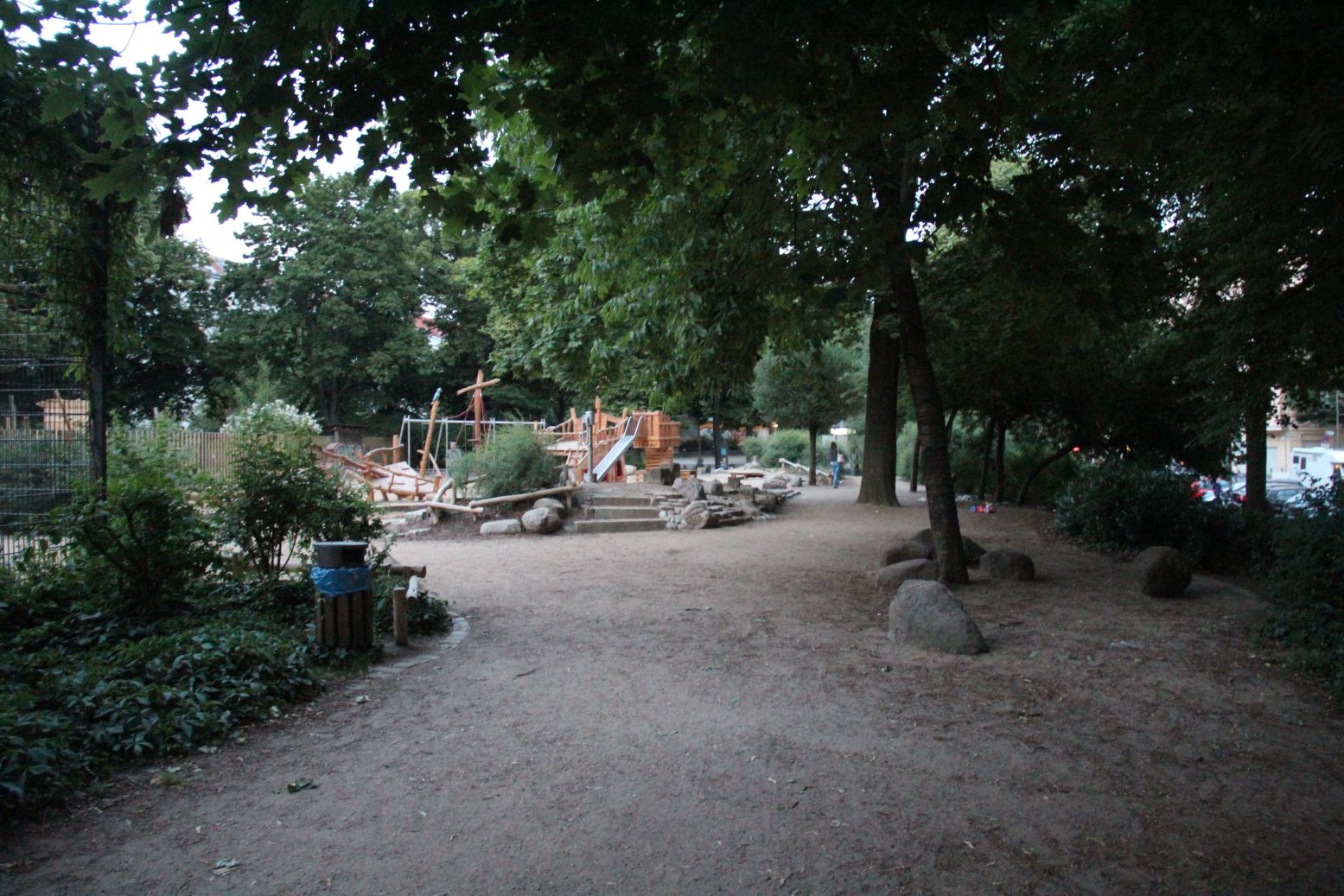Participation or Inclusion?
Edited on
24 June 2019According to planning guidelines the more participative urban planning is, the better the outcomes are. However, in reality the link between more/deeper participation of residents and more positive social and environmental outcomes is not at all straightforward – public participation has many pitfalls, as shown on examples of public square planning in Budapest and Berlin.

In this article the potential problems of public participation will be illustrated by examples of public square planning in Budapest and Berlin. The analysis is partly based on results achieved in the Green Surge project funded by the European Commission Seventh Framework Programme (FP7). Another source of inspiration is the USER network of URBACT.
Participation in planning
Arnstein’s “Ladder of citizen participation” (Arnstein, 1969) is probably the most cited piece of the planning literature. According to Arnstein there are 8 rungs on the ladder of citizen participation, from manipulation up till citizen control. Leaving the first two (manipulation and therapy) out of consideration, as these are solely about spreading information without allowing any feedback, real interaction between the partners starts with the next three rungs. Informing, consultation, placation refer to cases where the citizens have the right to express ideas, but the decision is still up to the public actor. The most developed stages of citizens’ participation are those upper rungs (partnership, delegated power, citizen control) where co-planning results in co-decision and co-implementation.
One of the main critiques in the planning literature against the (otherwise very useful) Arnstein ladder is that it refers only to top-down planning, not dealing with other ways how citizens may influence planning. Another important critique is that it does not consider the content of participation – which can easily turn into the exclusion of others who would also have the right to participate but are weaker or less interested in the planning process.
Social inclusion in planning
Social inclusion in general refers to the involvement of wide range of social groups (also the vulnerable ones that can easily be excluded) to different spheres of life by improving the accessibility to public and private services. Accordingly, socially inclusive planning puts the emphasis on the residents and their groupings and on the inclusion of the socially weaker parts of them.
On the basis of an analysis of 40 European cities, it has been shown that to enhance the social aspect of sustainable development the role of the local authorities is crucial. It is not enough that the municipality has high capacity of policy-making for sustainable development. To achieve the best results the local government has also to work “…together with a civil society that is not only permitted to participate but which also has a fairly high level of capacity to act.“ (Baker-Eckerberg, 2008:91) Thus both the leadership and commitment of local government and the active involvement of local civil society are crucial (ibid, 92). The latter is not at all existing automatically everywhere, thus public interventions might be needed to develop it.
How can planning and planners influence participation towards inclusion?
Can there be any problem in planning if participation, i.e. the cooperation between the local government and the civil society seems to work well? Yes, „… extending participation can mean more power for those already in advantaged positions. The relationship between social capital and democracy is therefore shaped by the capacity of governing institutions to listen to, and channel the range of interests.“ (Baker-Eckerberg, 2008:77) The strong participation of some of the actors as opposed to no participation of others usually leads to the dominance of pressure groups. Lobbying “... might lead to bottom-up resistance against planned public policies or to pushing through some changes against the will of politicians and planning procedures.“ (Tosics, 2013:399) This aspect became even more important after the break out of the financial crisis, as less public money remained for distribution – therefore more attention has to be paid to socially oriented approaches of participation/inclusion.
In all cities of Europe there are certain aspects of planning that are object to public consultation dictated by laws or regulations. However, Green Surge research has shown that these forms of consultation are very often formal, more output oriented (aiming to approach the different stakeholder groups) than result oriented (to ensure that the different groups have really been contacted and their ideas have really been taken into account). In most countries of Europe the guidelines imposed by the state only encourage consultation and the involvement of stakeholder groups into the planning process in the weaker, output oriented form.
Allowing for bottom-up ideas in the participation process might be a step towards more socially inclusive planning, especially if these ideas are taken into consideration in decision-making. In the last decades even more radical new approaches have been formulated to enhance the inclusive/social character of planning through citizen participation. On the basis of Bratt-Reardon (2013:359) these can be summarized in the following way:
- Advocacy planning, an idea raised by Paul Davidoff (1965), aims to provide disadvantaged residents with opportunities to enter into negotiations with public officials and private developers. In this case the planner acts as “advocate” of the socially disadvantaged, gives them expert advice in planning matters, assists and represents them before official bodies. This might be a first step for a planner to give up the position of a value-neutral technocrat whose role is to carry out the plans of those in power. Instead, an advocacy planner assists multiple interests, with a particular focus on the poor and minority concerns, to argue their alternative proposals.
- Empowerment planning goes a step further insofar it seeks to enhance the capacity of community organizations to influence the investment decisions. The planner applies the planning skills so that people can make informed decisions for themselves, both regarding organizing and political strategies, as well as more traditional planning outcomes–programs, buildings, businesses ... the approach integrates participatory action research, direct action organizing, and popular education into a powerful social change process (Reardon, 2000; Kennedy, 1996)
- Equity planning aims for changing the planning process itself towards more equitable outcomes, based on planners who work inside government and actively influence opinion, mobilize underrepresented constituencies, and develope, advance and perhaps implement policies and programs that redistribute public and private resources to the poor and working class (Metzger, 1996).
The above mentioned planning approaches are – in an increasing order – more radical towards social inclusion insofar they are giving up the ‚neutrality‘ of planning, aiming at active support to be given to those population groups which would not be represented sufficiently in the participation process. The essence of these radical approaches is the understanding and empowerment of the disadvantaged groups, either through the planner or with the help of social workers and the aim to influence planning towards more equitable outcomes.
The difference between the usual approach to provide opportunities for participation to all and the additional efforts to empower the less motivated groups can be explained on two examples of planning public squares in European cities.
A case from Budapest: Teleki tér
In Budapest one of the ‚hot topics‘ of urban development is the discussion about the involvement of affected groups into planning. In the case of Teleki square an innovative participative planning procedure has been launched by a group of young planners called “Újirány” (“New direction”). With the consent of the district 8 local government the group of planners initiated a public planning procedure about the new layout of a large square in one of the most deprived neighbourhoods of Budapest. The result was very positive: many of the residents became active and finally their ideas were implemented with the help of EU money. Moreover, the active residents formed an association which takes responsibility in the protection of the renewed square.
This participatory planning procedure was a pioneer attempt in Budapest. However, acknowledging the achieved results, some sociologists raised critical voices, emphasizing that in reality the process did not include all groups, as the most marginalized social groups living in large numbers in the area (the Roma, the homeless) were left out. In the Teleki square example the participation process stopped before entering the phase of empowerment or equity planning – there were no attempts to actively look for those residents who did not show up by themselves in the course of the (otherwise open for all) participatory planning procedure. The Roma, the homeless, the alcoholics did not participate and this can clearly be seen in the result of the planning procedure: the new furnitures of the park are carefully designed not to allow sleeping; drinking and smoking has been strictly forbidden in the new park area; the green areas are not allowed for longer-term use. Besides having the park fenced and closed between 8 pm and 8 am, there are guards employed to kick out immediately those people who hurt these rules.
The result, as the pictures show, is a nice green area for different age groups, developed in a participative planning process which, however, excluded all groups which were considered as deviant by the majority population. This has led in practice to a new exclusion: the hated groups have even less access to green space as they had before the improvement of the public square started.



A case from Berlin
The Helmholtz square participative planning project in Berlin has a long history. Some 15 years ago the square has been regenerated in a district government initiated participative process. The officials and planners made huge efforts to involve into the discussions all the different users of the square. As a result all the different user groups got their separated place in the square, even the alcoholics, who were always present and belonged since long to the area.
The square was part of one of the formally designated urban regeneration areas of Berlin. However, with the improvement of the indicator values reflecting the social position of the local residents, this area was the first which in 2007 has been phased-out of the Neighbourhood Management programme. As a result the special budget to deal with the problems of Helmholtzplatz has been eliminated, the social outreach work and the clerk's office were closed down.
The socially weaker groups continue to be present also nowadays in the square. As a most visible sign of that a heterogeneous group of people is drinking in the central area (not in the corner which was originally designed for them). They are sometimes noisy, and have large dogs. Their presence is recently less and less tolerated by the residents around – not independently of the gentrification process which has speeded up in this centrally located neighbourhood of Berlin. As the middle class groups become dominant among the residents, more and more people would like to kick out the “problematic elements”. On the other hand the association of long-term residents shows strong social sensitivity and would like to keep the diversified structure of the square.
For the time being the district government would avoid the displacement of the poorer people and would like to keep the place open for all. In order to achieve this, amidst the growing protests of the middle-class residents, the government wants to put again more resources into the management of the square, aiming for better care of the place, and creating a less centrally located place for the alcoholics, where they would be required to keep the rules that apply to all. Huge importance is given to start again continuous social outreach work – despite the financing problems, as the subsidies are only available for physical interventions. Equally high importance is given to measures to keep the social mix of the residents, to prevent the conversion of rental housing into condominiums and apartments and keep some type of rent control.
In the last year the district government made huge efforts to discuss the problems with all groups of residents and users of the square. If the negotiated interventions can be carried out and the financial means for ongoing social care will be found, the mixture of uses of Helmholtz square can be saved, including also the lowest strata of society – the alcoholics and homeless would get again their (less centrally located) place.



Conclusions and lessons learnt
The comparison of the two public square planning processes in Budapest and Berlin shows remarkable differences. The Budapest case can be considered as much less successful to include the socially disadvantaged groups into the planning process and into the use of the square. It is important to recognize that this is not only (and not even mainly) the fault of the young and enthusiastic planning team which coordinated the participatory process. To a much larger extent it shows the lack of open attitude towards social inclusion of the local residents in Budapest. Furthermore, there are huge differences in the attitudes of the local governments of the two cities: in Berlin both the Senate and the district government commit themselves to follow inclusive policies with active support to the disadvantaged strata of the society. Unfortunately in Budapest currently just the opposite tendencies dominate from the side of ruling politicians at all level.
The lesson to be learnt from these cases is that participation (even on the higher rungs of Arnsteins ladder) is in itself not enough to ensure socially inclusive outcomes of the planning processes. In order to achieve more social justice in planning the participation mechanisms have to be extended with active work of planners and public officials towards the most disadvantaged population groups, to ensure that their interests are sufficiently taken into account during the planning process, leading to a new development which is really open to all strata of society.
References
Arnstein, S.R. (1969). A ladder of citizen participation. Journal of the American Institute of Planners 35, 216-224
Baker, S – Eckerberg, K (eds) 2008 In Pursuit of Sustainable Development, New governance practices at the sub-national level in Europe. Routledge
Bratt, R.G – Reardon, K.M., 2013: Beyond the Ladder: New Ideas About Resident Roles in Contemporary Community Development in the United States. In: Carmon, N – Fainstein, S. (eds) Policy, Planning, and People. Promoting Justice in Urban Development. University of Pennsylvania Press, 2013, pp. 356-381.
Davidoff, P 1965: Advocacy and pluralism in planning. In: Journal of the American Institute of Planners, 31:331-338.
Green Surge (2013-2017). Green Infrastructure and Urban Biodiversity for Sustainable Urban development and the Green Economy. A Collaborative Project under the EU’s Seventh Framework Programme for Research and Technological Development. www.greensurge.eu
Kennedy, M 1996: Transformative Community Planning: Empowerment Through Community Development. Prepared for the 1996 Planners Network Conference, “Renewing Hope, Restoring Vision: Progressive Planning in Our Communities.”
Metzger, J.T., 1996: The theory and practice of equity planning. An annotated bibliography. In: Journal of Planning Literature, 11:112-126.
Reardon, K.M. 2000: An experimental approach to creating a community/university partnership that works: The East St. Louis Action Research Project. In: Cityscape: A Journal of Policy Development and Research, 5:59-74.
Tosics, I, 2013: Sustainable land use in peri-urban areas: government, planning and financial instruments. In: Nillson, K – Pauleit, S – Bell, S – Aalbers, C – Nielsen, T.S. (eds) Peri-urban futures: Scenarios and models for land use change in Europe. Springer, 2013. pp.373-404
USER. An URBACT network (2012-2015) exploring the link between the design of urban public spaces and the main goals of urban planning. New trends in how public spaces are used, what the new users’ needs are, increasing malfunctions and conflicts among uses, etc. are discussed. http://urbact.eu/user
 Submitted by ivan.tosics on
Submitted by ivan.tosics on
